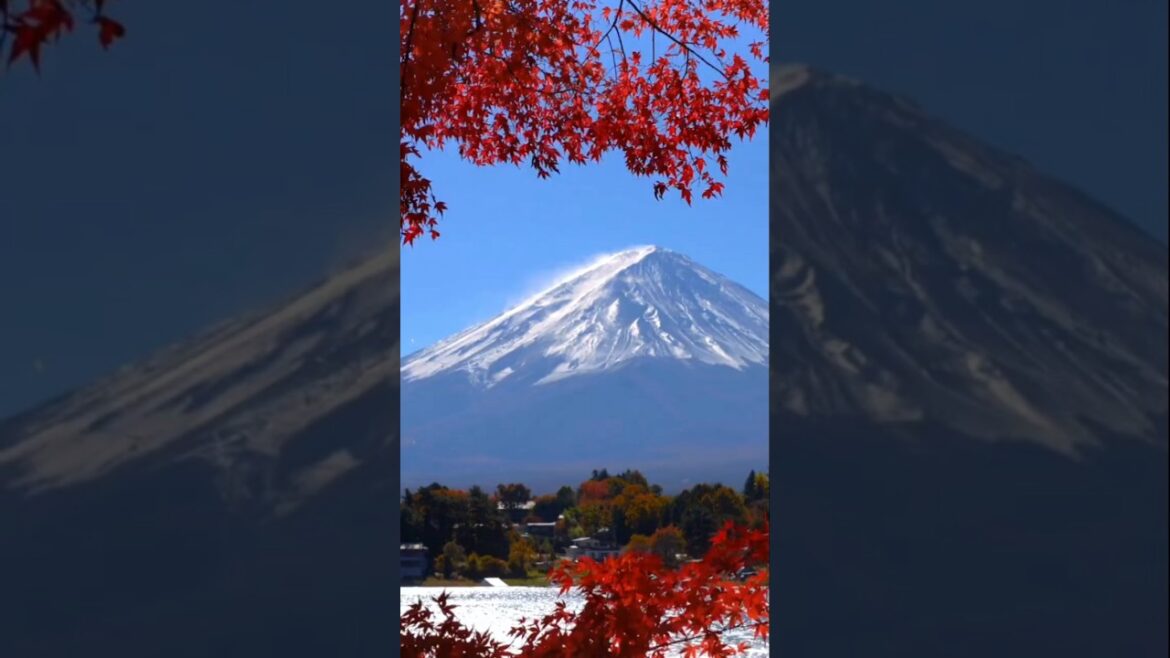“Mount Fuji: Japan’s Majestic Icon and Sacred Peak”
Mount Fuji, located on Honshu Island in Japan, is one of the most iconic and revered mountains in the world. Standing at 3,776 meters (12,389 feet), it is the highest peak in Japan and a symbol of beauty, tranquility, and spiritual significance. Mount Fuji’s symmetrical, snow-capped cone is instantly recognizable and has captured the imaginations of artists, poets, and travelers for centuries. It is not only a natural wonder but also a sacred site, deeply intertwined with Japan’s culture, history, and religion.
Mount Fuji is a stratovolcano, formed over hundreds of thousands of years by a series of eruptions. The mountain’s last eruption occurred in 1707 during the Edo period, and since then, it has remained dormant. Its conical shape and symmetrical slopes give it an almost perfect appearance, which has made it a popular subject for photographers, artists, and pilgrims alike. The mountain is often shrouded in mist or framed by the landscapes of nearby lakes, making it an ever-changing yet timeless part of Japan’s natural scenery.
Culturally, Mount Fuji holds great spiritual significance. It has been a site of pilgrimage for centuries, and many Japanese people believe the mountain is sacred. In Shinto, the indigenous religion of Japan, Mount Fuji is considered the home of the goddess Konohanasakuya-hime, the deity of Mount Fuji and cherry blossoms. The mountain’s spiritual importance is reflected in the many shrines, temples, and rituals that take place on its slopes.
For centuries, Mount Fuji has also been an inspiration for Japanese art. Perhaps the most famous representation of the mountain is the series of woodblock prints by ukiyo-e artist Katsushika Hokusai, titled *Thirty-Six Views of Mount Fuji*. These prints, particularly the famous “The Great Wave off Kanagawa,” capture the mountain’s beauty and prominence within Japan’s cultural identity. The mountain’s depiction in art emphasizes its symbolic role as a powerful, natural force.
Mount Fuji is a popular destination for hikers and tourists, attracting over a million climbers each year. The mountain has several routes to the summit, with the Yoshida Trail being the most popular. Climbing Mount Fuji is an annual tradition for many Japanese people, particularly during the climbing season in July and August, when the weather is most favorable. Pilgrims and hikers ascend to the summit, not only for the physical challenge but to witness the breathtaking sunrise known as “Goraiko,” which is considered a deeply spiritual experience.
The area surrounding Mount Fuji is equally remarkable. The Fuji Five Lakes (Fujigoko) are located at the northern base of the mountain, providing picturesque views and recreational opportunities such as hiking, fishing, and boating. Lake Kawaguchi, in particular, offers one of the most stunning views of Mount Fuji and is a popular spot for photographers. The region is also home to numerous hot springs and traditional ryokan (Japanese inns), providing visitors with a chance to relax and enjoy the natural beauty.
In 2013, Mount Fuji was designated a UNESCO World Heritage site, recognized for its cultural significance and natural beauty. This recognition highlights not only the mountain’s visual impact but also its importance as a symbol of Japanese identity and spirituality. Mount Fuji continues to captivate people from all walks of life, inspiring awe with its majestic presence, deep cultural roots, and stunning landscapes.
Whether admired from afar, hiked up, or depicted in art, Mount Fuji is an enduring symbol of Japan’s harmony between nature, spirituality, and human endeavor. Its towering peak serves as a reminder of the beauty and power of nature, while also holding a central place in the hearts and minds of the Japanese people.

